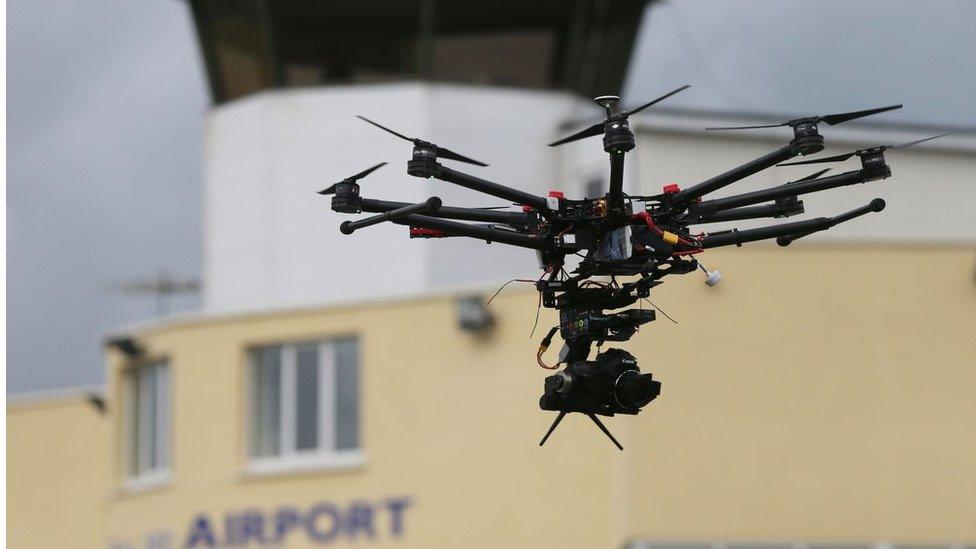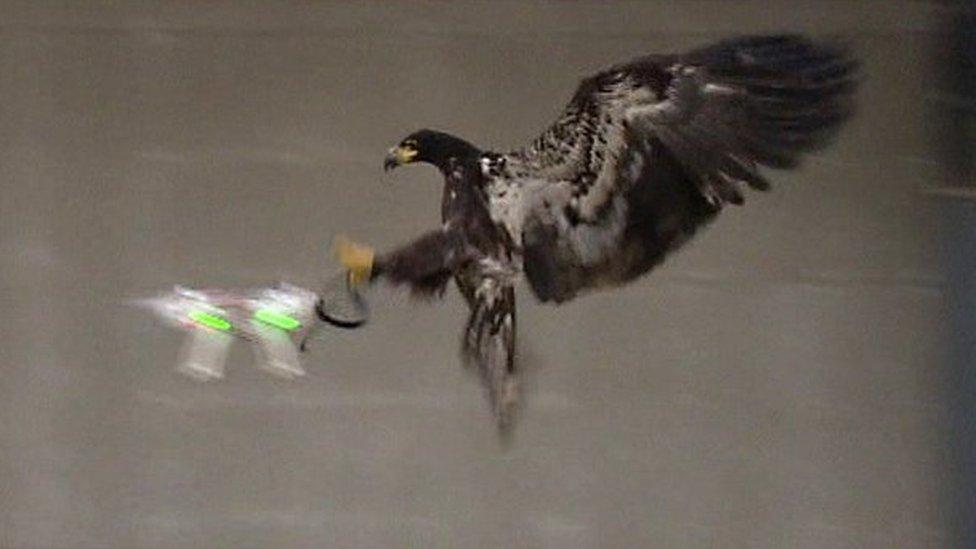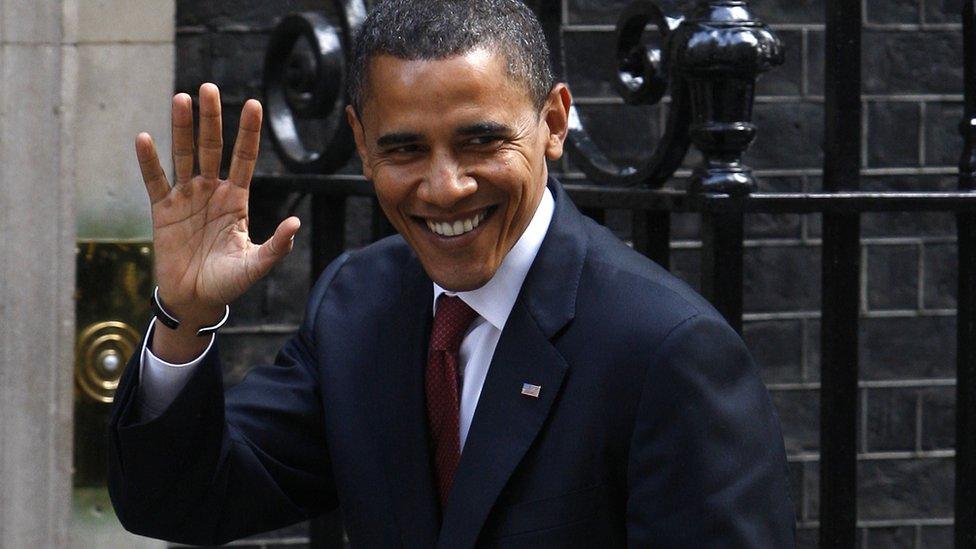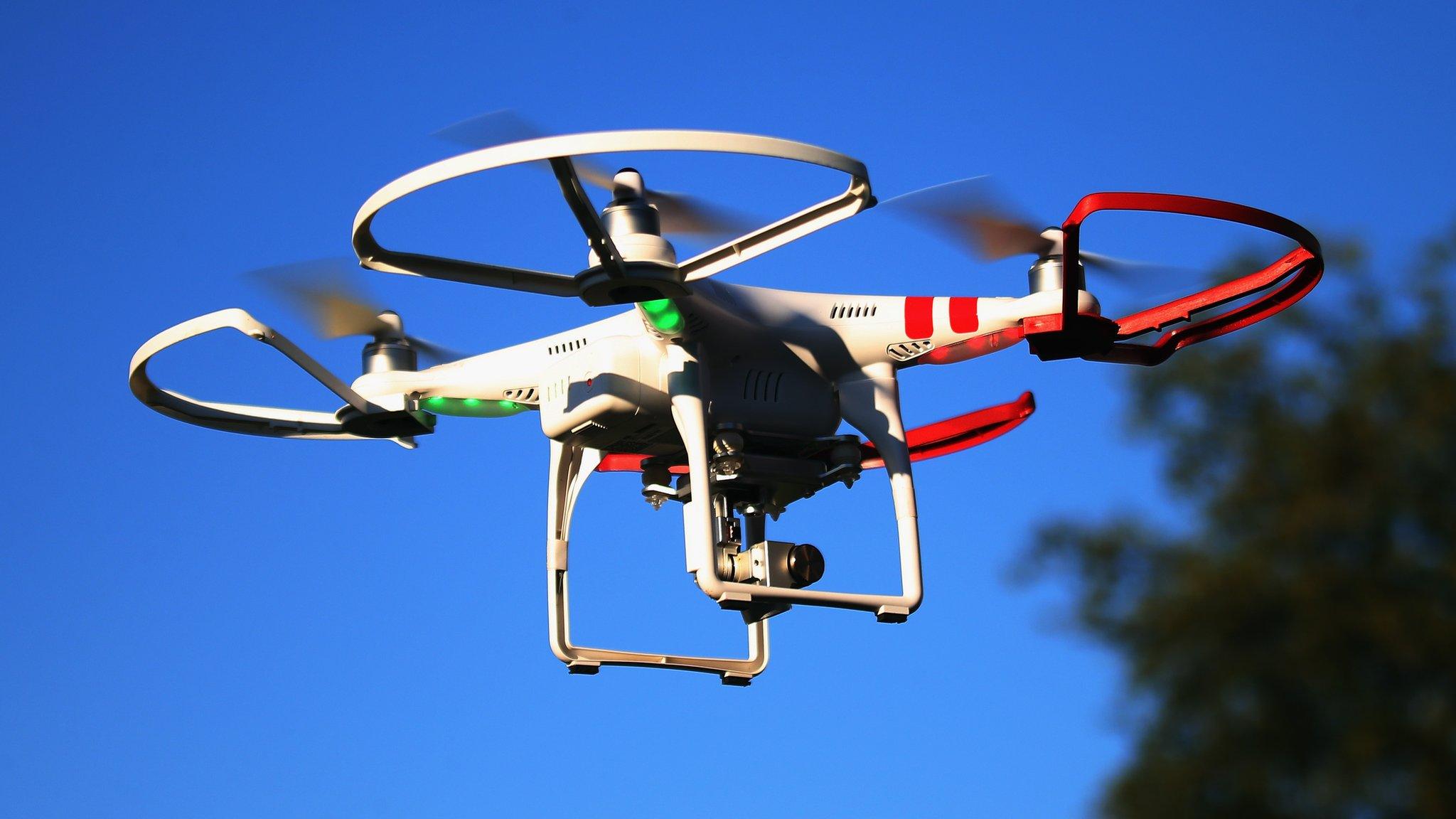US mulls tech to disable rogue drones near airports
- Published

The Civil Aviation Authority said there have been near misses where drones have been flown close to aircraft
US politicians are considering new legislation that would allow authorities to intercept or shut down drones that get too close to airports.
The US Senate passed the measures, part of a general aviation bill, on Tuesday in response to rising concerns about drone safety.
It follows a suspected collision between a drone and a British Airways plane near London's Heathrow Airport.
Start-ups are already lining up to offer solutions to the problem.
The FAA (Federal Aviation Authority) reauthorisation legislation, passed by the US Senate, could also pave the way for the commercial deployment of drones in national airspace - but comes with several safety caveats.
Senator Bill Nelson, a democrat from Florida, introduced these safety features and warned that a drone sucked into a jet engine could render it inoperable or start an explosion.
The bill also contains new rules that would force commercial airlines to keep flight-critical systems separate from in-flight entertainment systems in the wake of concerns that hackers could remotely take control of aircraft.
The bill will now go to the House of Representatives for consideration.

Police said the suspected drone had struck an inbound Airbus A320, similar to this one
In the UK, the British Aviation Authority told the BBC in the wake of the suspected collision between a drone and a passenger jet: "Stronger regulation and enforcement action must be a priority for the government, to ensure that the airspace around British airports remains amongst the safest in the world.
"Anyone operating an unmanned aerial vehicle has an obligation to know the rules and ensure they are capable of operating it safely. Doing so in proximity to an airfield or aircraft is both illegal and clearly irresponsible."
It has not been confirmed that the plane was hit by a drone, with transport minister Robert Goodwill telling parliament that "there's some speculation it may have even been a plastic bag or something".
Current rules state that drones must
be visible at all times
be flown below 400 ft (122m)
not be flown over congested areas
those fitted with cameras should not be flown within 50m of people, vehicles or buildings.
Drones will be banned from flying in large parts of London during the visit of the US President Barack Obama from 21 April until 24 April.
Eagle defence
Tech start-up SkySafe has recently unveiled technology that allows law enforcement agencies to hijack a drone's controls and neutralise it.
"We fully take control of the drone from the operator, it sees us as the legitimate controller, and we can move it to a safe location and land it," co-founder Grant Jordan told The Verge tech news website.

Meanwhile tech firm Battelle has released a radio jammer dubbed Drone Defender which also allows users to steal control of a drone from its owner. The device can currently only be used by government agencies.
In Japan, in response to a drone that landed a tiny piece of radioactive sand on the roof of the home of the Japanese prime minister, unmanned vehicles with nets have been deployed to catch rogue devices.
And the UK's Metropolitan Police has said that it is considering using eagles to intercept drones, following trials in the Netherlands.
- Published19 April 2016

- Published18 April 2016

- Published11 December 2015
